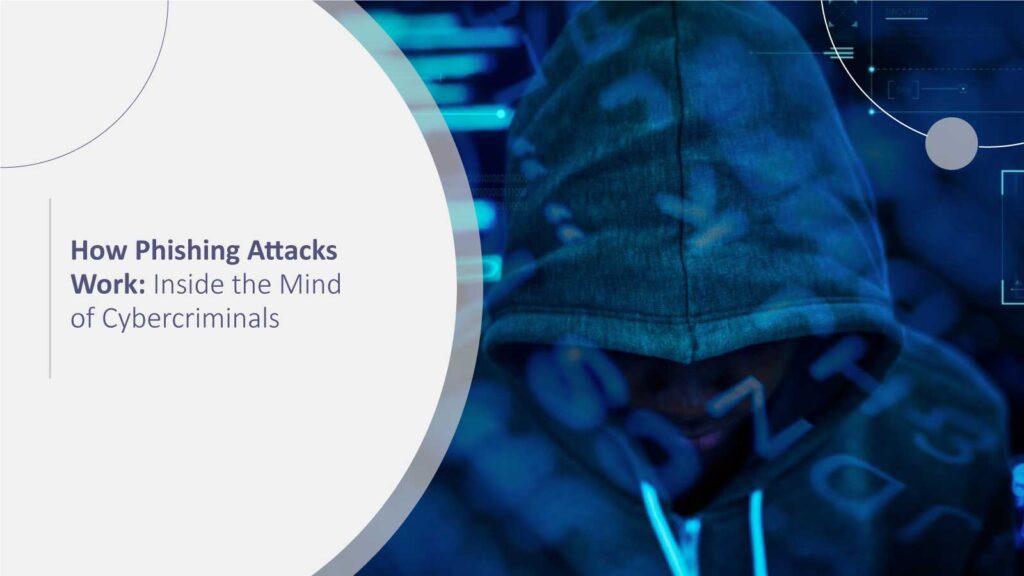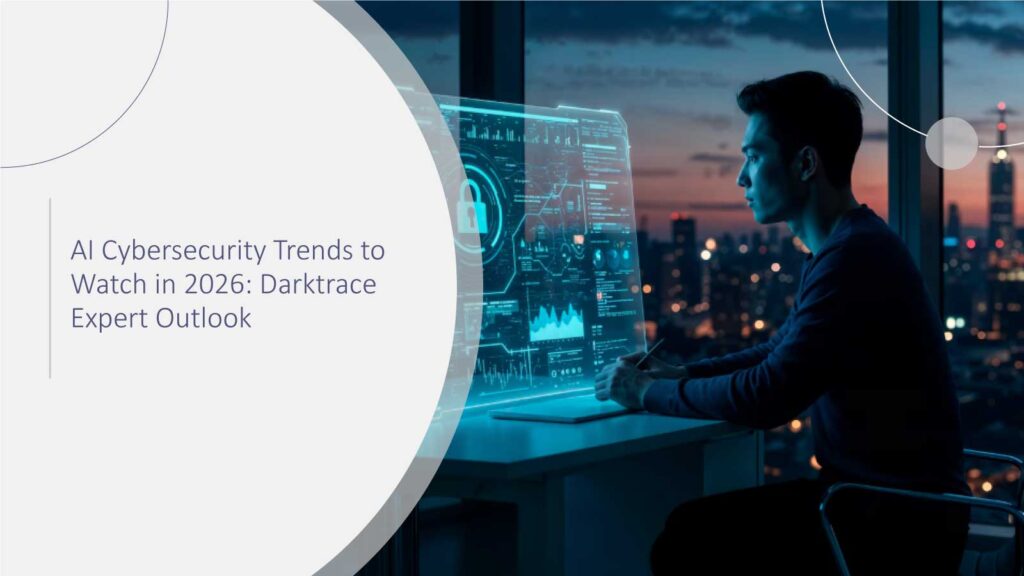Introduction: Why We Still Click
Monday morning. Your inbox is brimming. Coffee in one, you scan subject lines with the other. One makes you pause: “Suspicious activity detected on your account – verify immediately.” Your heart is racing. You click. If that scenario feels familiar, you’re not alone. Despite decades of cybersecurity awareness, phishing remains one of the most successful cyberattack methods, accounting for 36% of all data breaches globally in 2024 (Verizon DBIR Report, 2024). Why? Because phishing isn’t really about breaking firewalls, it’s about bending human behavior.
Cybercrooks are no magic wand carriers. They are master psychologists. They’re experts at pushing buttons, fear, curiosity, and rush that even pro ignores warning signs. To understand how phishing is done is a matter of being in a cybercrook’s head. And if you’re, their tricks are ridiculously obvious.
Below in this article, we’re going to dissect:
- How phishing actually works today, 2025
- The emotional buttons attackers push
- Examples that we encounter on an everyday basis that experts can identify with
- Anti-phishing techniques without paranoia
Let’s start- because the more you’re like them, the less likely they’ll be able to scam you.
What Is Phishing, Really?
Phishing is internet trickery. As a substitute for network brute-force attacks, the perpetrator uses counterfeit messages email, cell phone text message, or voice mail, that are constructed to trick you into revealing sensitive information such as login credentials, payment details, or access codes.
While malware lurks in the background, posing as code, phishing festers before your eyes in those very emails or websites you adore and trust. It succeeds because it can adapt. Phishing no longer only pertains to dodgy lottery victories; it’s brand-aware, globalized, and uncomfortably tailored. Businesses spent $188 billion on information security in 2023, underscoring how serious the threat has become, as per Mcknisey.
The Psychology Behind Phishing: Cybercriminals as Mind Readers
Suppose cybercrooks had an instruction manual. Spoiler warning: they do, and it’s not in programming.
1. Urgency and Fear
“Your account will be suspended in 24 hours.”
Less is more scares people quicker. Cybercrooks love to instill a sense of urgency because crazy things wait while rationality does.
2. Authority and Trust
An “email from your CEO” commands power. Even seasoned executives are caught off guard by an email that looks legitimate.
3. Curiosity and Reward
“See this exclusive bonus report.” Everyone has a weakness for being “in on” something special. Criminals are aware that he allure of something being “all yours” is virtually irresistible.
4. Familiarity
Ever been sent an email from what appeared to be your bank? Cyberattackers so successfully mimic logos, font, and even sender domains that it takes a second look to realize the rip-off.
Phishing is a human issue. It’s not technical in nature. And as long as we have human nature around, phishing will succeed until we’re used to breaking through the scam.
Phishing Tricks That You Should Know About in 2025
There is more than one trickery used by cyber attackers. These are the most prevalent and rapidly evolving ones currently:
1. Email Phishing
The old reliable. Faux bills, faux password reset, faux “security warnings.” Education campaigns or not, email phishing is the gateway to 91% of cyberattacks. In the healthcare sector, 58.5% of serious security incidents begin with email phishing.
Not a blast attack. It’s personalized. Attackers do their homework (LinkedIn, press releases, company blog) and send highly targeted messages. If an email mentions last quarter’s review of strategy, would you ever doubt it’s a scam?
3. Smishing (SMS Phishing)
Text messages of “Your delivery is delayed, click here” during the pandemic went viral and haven’t let up. Rather, smishing fraud hit $330 million in 2024 (FTC Report).
4. Vishing (Voice Phishing)
Consider calls that introduce themselves as IT, HR, or even the IRS. The person on the other line isn’t just real, it’s imperative.
5. Business Email Compromise (BEC)
The holy grail of phishing. The attackers impersonate executives and instruct employees to wire funds or exchange sensitive information. BEC losses totaled over $3 billion in one year in the US alone (FBI IC3 Report 2025).
6. Quishing (QR-code phishing): Emerging and stealthy. Threats via QR codes are equally as effective as email phishing and harder to spot.
Watch out for AI-powered Phishing as well.
Inside a Phishing Attack: A Step-by-Step Analysis
Well, let’s take apart a typical phishing attack step by step to actually get inside the heads of cybercrooks.
Reconnaissance – Phishers scrape data (social network updates, corporate websites, public profiles).
Hook Building – They build a legitimate-looking email or message with logos, from addresses, or insider lingo.
Delivery – The mail lands in your inbox, somewhere in the middle of rush hour, when your focus is at a low point.
The Trigger – Urgency, interest, or trust gets you to click or respond.
Exploitation – The link takes you to a spoofed login page, or the file downloads malware.
Extraction – Credentials are grabbed, accounts are hijacked, or money is transferred.
You catch the drift? At each step, the attackers count not just on technology, but on your response.
Real-World Anecdote: The “CEO Gift Card” Scam
Here’s an example that I’ve heard time and again in interviews with CISOs:
A worker receives an email supposedly from the boss requesting a spur-of-the-moment buy of gift cards off the internet “for client appreciation.” The message is effective, timely, and polite, perhaps on a Friday evening when executives have gone home.
Colleagues do not want to seem hesitant, so they buy the cards and redistribute the codes. Before the scam is uncovered, the money is gone.
Easier than that? Yes. Successful? In 2024, the same scam cost over $450 million globally.
Since late 2022 and the rise of generative AI, phishing attacks have surged by 1,265%, according to McKinsey.
Why Smart People Still Fall for Phishing
You might be thinking: If everybody knows so much about phishing, why do intelligent people fall for it?
Because phishing isn’t an intelligence test. It is a timing, distraction, and emotional test. Even CISOs confess to nearly clicking on suspicious links when not fully awake.
Cybercrooks don’t require people to fall prey to their ploys all the time. They require a few. And in companies with thousands of workers, that’s sufficient to get inside.
How to Beat Phishing Attacks
Luckily, knowledge coupled with intelligent maneuvers can significantly lower threats. Here’s how to get ahead of them:
Take Your Time Before Clicking – When a notice attempts to produce fear, hesitate. Genuine organizations don’t rush you.
Verify the Source – Examine email addresses carefully. One misplaced letter (micros0ft.com) is suspicious.
Hover Over Links – Hover, don’t click, to verify destination URL.
Use Multi-Factor Authentication (MFA) – Even if a cyberattacker with credentials, MFA prevents them.
Report, Don’t Delete – IT must be notified of suspicious email. Silence only helps attackers.
Learn Forever – Phishing constantly changes. Regular simulated phishing and training keep employees alert.
Use the flu shot analogy. Vigilance is temporary it requires booster shots.
Recommended: Bitwarden Launches Access Intelligence to Defend Against Credential Risks and Block AI-Driven Phishing
Conclusion: Think Before You Click
Phishing succeeds because it is customized. It’s technology and psychology to use our trust, curiosity, and habits. But with knowledge of the playbook, the hoax is less successful.
Cyberthieves are cunning, but they’re not omniscient. If you’re aware of their tricks, take your time, and peek before you jump, you can become a master of your inbox from a minefield to a Monday morning routine.
The second time you receive a yelping, frantic subject line shrieking for attention in a blitzkrieged email, take a moment and pause to reflect: Am I being phished, or am I being played? That momentary pause of hesitation can quite possibly be protecting your information, your money, and your organization.
FAQs
1. How does spear phishing differ from phishing?
Phishing is a wide brush, stroking thousands in bulk mailouts. Spear phishing is more targeted, sending tailored emails to specific recipients or groups.
2. Why on earth is phishing still working in 2025?
Because it attacks psychological weakness, not technology. While humans react emotionally to fear, urgency, or curiosity, phishing will remain effective.
3. How do I immediately identify a phishing email?
Spot misspelled emails, unknown attachments, generic salutations, and single requests. Always confirm with the sender via another means.
4. Is phishing merely an email issue?
No. Phishing is also achieved through SMS (smishing), telephone (vishing), and social media messages.
5. What happens if I mistakenly click on a phishing link?
Immediately shut down your connection to the internet, inform your IT/security personnel, and change your passwords. If sensitive data has been entered, monitor your accounts closely for suspicious activity.
For deeper insights on agentic AI governance, identity controls, and real‑world breach data, visit Cyber Tech Insights.
To participate in upcoming interviews, please reach out to our CyberTech Media Room at sudipto@intentamplify.com.







